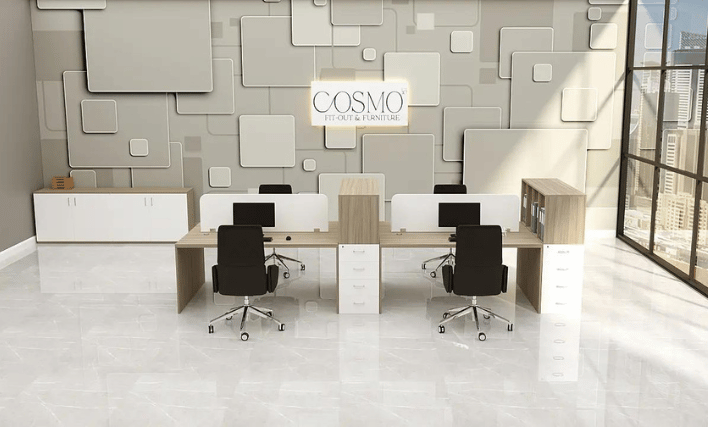Sidewalks are an essential part of the urban landscape, providing pedestrians with safe and convenient pathways to navigate the bustling streets of New York City. However, over time, wear and tear, weather conditions, and other factors can lead to the deterioration of sidewalks, posing potential hazards to pedestrians and property owners alike. Sidewalk repair in NYC is a critical undertaking that not only enhances the city’s aesthetic appeal but also ensures the safety and accessibility of its walkways.
The Importance of Sidewalk Repair
- Safety First: Preventing Accidents and Injuries on sidewalks that are cracked, uneven, or in disrepair can become hazardous for pedestrians. Uneven surfaces can cause tripping, leading to falls and injuries. By investing in timely sidewalk repairs, NYC can significantly reduce the risk of accidents, ensuring the safety of both residents and visitors.
- ADA Compliance: Accessibility for All the Americans with Disabilities Act (ADA) mandates that sidewalks be accessible to individuals with disabilities. Crumbled sidewalks and uneven surfaces can make it challenging for people with mobility impairments to navigate the city. Repairing sidewalks is not just about aesthetics; it’s about providing equal access to all members of the community.
Challenges in Sidewalk Maintenance
- Climate Impact: The NYC Factor New York City’s climate can be harsh, with freezing temperatures in winter and intense heat in summer. These extreme weather conditions can accelerate the deterioration of sidewalks, causing cracks, shifts, and overall degradation. The city’s Department of Transportation faces the challenge of maintaining sidewalks that can withstand such climatic variations.
- Root Growth and Tree Impact: Trees lining the city streets enhance the urban environment, but their root growth can wreak havoc on sidewalks. As roots expand, they can push up concrete slabs, leading to uneven surfaces and potential hazards. Balancing the preservation of trees with the maintenance of sidewalks is an ongoing challenge.
Sidewalk Repair Methods
- Concrete Repair and Replacement: The most common approach to sidewalk repair involves replacing or repairing damaged concrete sections. This method not only addresses existing issues but also enhances the overall appearance of the sidewalk. It’s crucial for repair teams to match the new concrete with the existing one to maintain a seamless appearance.
- Grinding and Leveling: Uneven sidewalks can often be remedied by grinding down raised edges and leveling sunken sections. This cost-effective method restores the evenness of the sidewalk, eliminating tripping hazards and maintaining a smooth walking surface.
The Role of NYC Government and Property Owners
- Government Initiatives and Regulations: The NYC Department of Transportation plays a pivotal role in overseeing sidewalk maintenance and repair. The agency’s inspection programs identify areas in need of repair, ensuring that property owners comply with city regulations. The department also provides guidelines on repair methods and timelines.
- Shared Responsibility: Property Owners In NYC, property owners are generally responsible for the maintenance and repair of the sidewalks adjacent to their properties. This shared responsibility ensures that sidewalks remain safe and well-maintained. Property owners must be proactive in identifying and addressing issues to avoid potential liabilities.
-
- Clean Thoroughly: After each use, clean the cooler with mild soap and water to remove any residue. Ensure it’s completely dry before storing to prevent mold growth.
- Store with Lid Open: When not in use, store your cooler with the lid slightly ajar to allow proper air circulation and prevent odors.
- Avoid Direct Sunlight: Prolonged exposure to direct sunlight can degrade the cooler’s materials and insulation. Keep it in a shaded area whenever possible.
- Inspect Seals and Latches: Regularly check the seals and latches for any signs of wear or damage. Replace them promptly to maintain the cooler’s performance.
Benefits of Hard Coolers
- Superior Insulation: One of the primary advantages of hard coolers is their superior insulation. The thick insulation layer in these coolers helps maintain a consistent temperature for an extended period, allowing you to keep your beverages, food, and other perishables fresh for much longer.
- Ice Retention: Hard coolers are renowned for their impressive ice retention capabilities. They can keep ice frozen for days, making them an excellent choice for camping trips, road trips, and extended outdoor activities where access to fresh ice might be limited.
- Durability: The construction of hard coolers is designed to withstand rough handling, impacts, and harsh weather conditions. This durability ensures that your cooler will remain functional even after multiple outings, protecting your investment over time.
- Sturdy Seating and Surfaces: Many hard coolers are designed with reinforced lids that can serve as sturdy seating or additional workspace during your outdoor adventures. This dual functionality enhances their utility and makes them a versatile accessory.
- Wide Range of Sizes: Ice chest coolers come in various sizes, ranging from small personal coolers to large family-sized units. This versatility allows you to choose a cooler that best suits your needs, whether you’re embarking on a solo hike or hosting a group barbecue.
Features to Look For
- Insulation Technology: The quality of insulation is a crucial factor in determining the performance of a hard cooler. Look for coolers that utilize advanced insulation technologies to ensure maximum temperature retention.
- Latch and Seal Mechanism: A reliable latch and sealing mechanism is inessential to maintain the cooler’s interior temperature and prevent heat from entering. Many high-end coolers feature secure latches that create an airtight seal.
- Drainage System: Efficient drainage is essential to remove melted ice and water from the cooler. A built-in drain plug allows you to easily empty the cooler without tipping it over.
- Material and Build: The construction materials of the cooler impact its durability and performance. Coolers made from rotomolded plastic are known for their sturdiness and ability to withstand rough use.
- Handles and Wheels: For easier transport, consider coolers with ergonomic handles or even built-in wheels. This is particularly useful when the cooler is fully loaded and heavy.
- Additional Compartments: Some hard coolers come with separate compartments for storing dry items, cutting down the need for multiple containers during outdoor trips.
Choosing the Right Size
The size of your ice chest cooler should match the scope of your outdoor activities. Here’s a general guideline to help you choose the right size:
- Small: Ideal for short outings, day trips, or when space is limited. Can hold snacks, beverages, and a few ice packs.
- Medium: Suitable for weekend getaways, camping trips, or picnics for a small group. Offers ample storage space for food and drinks.
- Large: Perfect for extended camping trips, family gatherings, or outdoor events. Can store a significant amount of perishables and ice.
Maintenance and Care
Proper maintenance ensures the longevity and optimal performance of your ice chest cooler:
Community Involvement and Awareness
- Raising Awareness: Community engagement and public awareness campaigns are essential to highlight the importance of sidewalk repair. Informative initiatives can educate residents about the significance of well-maintained sidewalks and encourage timely repairs.
- Reporting and Collaboration: New York City residents can actively contribute to sidewalk maintenance by reporting issues to the city authorities. Collaboration between communities and local government fosters a sense of ownership, ensuring that sidewalks remain in good condition for everyone.
Conclusion
Sidewalk repair in NYC is not just about fixing cracked concrete; it’s about prioritizing the safety, accessibility, and overall well-being of the city’s residents and visitors. As the urban landscape continues to evolve, it is imperative that the city government, property owners, and communities work together to ensure that sidewalks remain safe, inviting, and functional for all. By investing in timely repairs and fostering a sense of shared responsibility, New York City can continue to thrive as a pedestrian-friendly metropolis.



